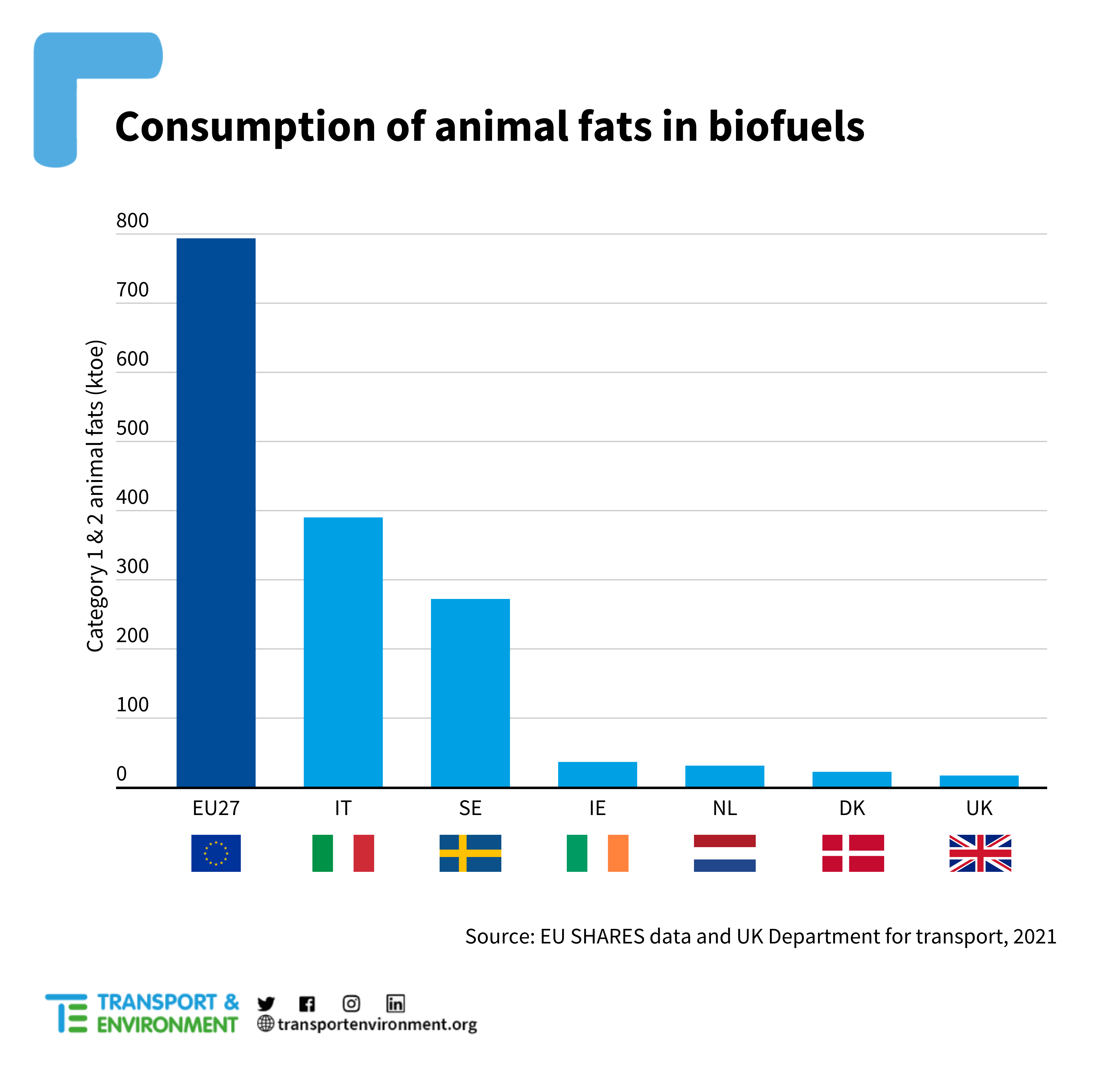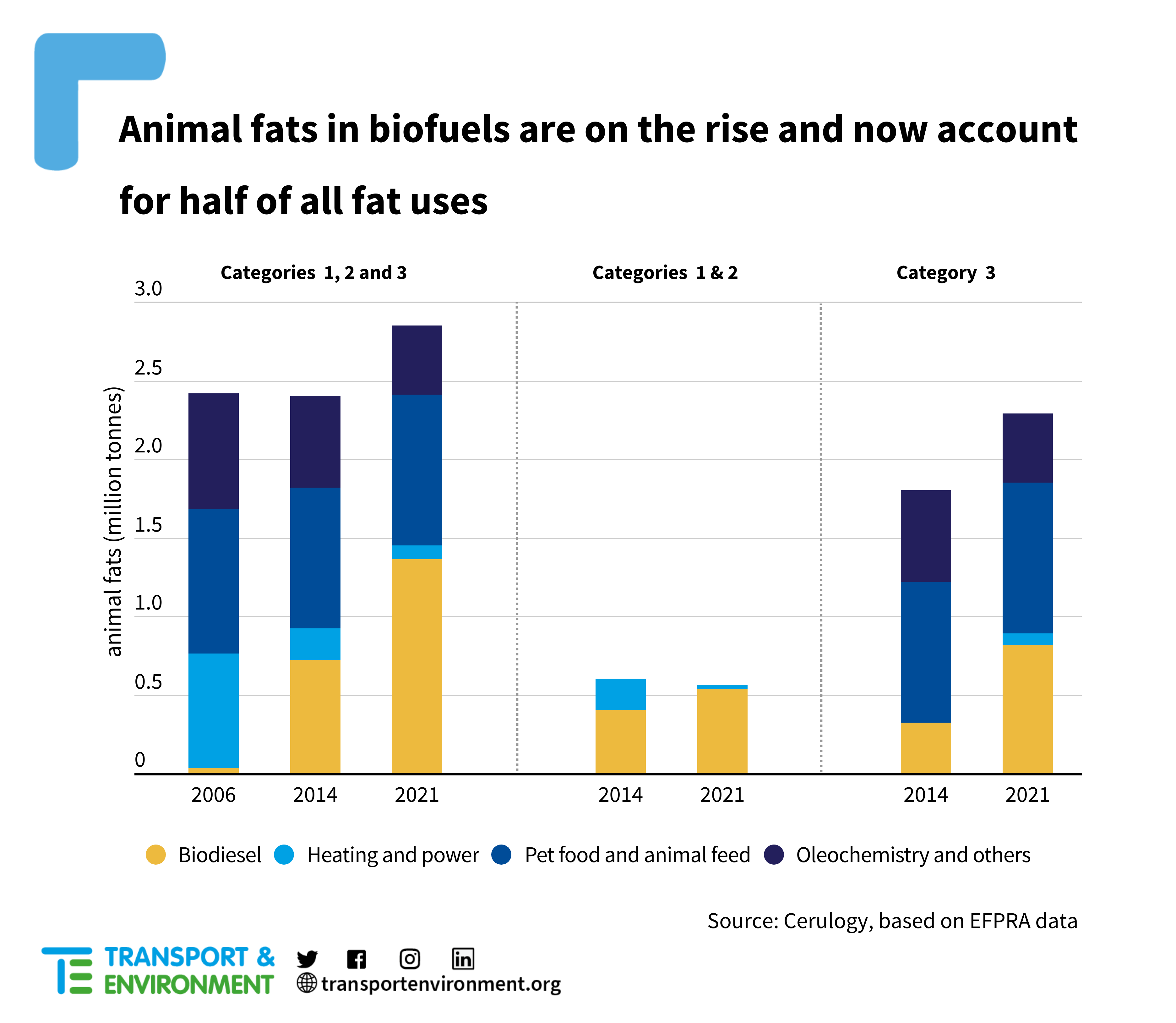Europe’s growing use of animal fats to power its cars and planes is becoming increasingly unsustainable, a new study on behalf of Transport & Environment (T&E) shows. The green group calls for greater transparency so that consumers know what is going into their tanks and fuelling their flights.
Use of animal fat biodiesel has doubled in the past decade and is 40 times higher than it was in 2006. European lawmakers have been promoting the by-product of industrial meat farming as a way of reducing the carbon impact of transport fuels.They are now setting their sights on planes – and to a lesser extent ships. However, there is not enough to go around. Nearly half of all European animal fats already go into biodiesel, despite being used extensively in the pet food, soaps and cosmetics industries. With the burning of animal fat biofuels set to triple by 2030, there will not be enough to scale it up sustainably, warns T&E.
Barbara Smailagic, biofuels expert at T&E, said: “It turns out pigs will fly. For years we’ve been burning animal fats in cars without drivers knowing. Now they will be fuelling your next flight. But that can’t be sustained without depriving other sectors, which will in turn likely switch to damaging alternatives like palm oil. We need greater transparency so that consumers know what is going into their tanks and fuelling their flights.”

Major airlines like Ryanair and Wizz Air have recently struck large deals with oil suppliers for what are termed ‘sustainable aviation fuels’ (SAF). Details of the exact feedstocks used in SAFs are often vague. But projections obtained from Stratas Advisors, a consultancy, shows that animal fats are expected to be the most common ‘waste’ feedstock used in SAFs, alongside used cooking oil. Like all ‘waste’ biofuels, the availability of animal fats is limited. Scaling up industrial meat farming is neither doable nor desirable. A flight from Paris to New York needs 8,800 dead pigs, T&E’s calculations show.

This is particularly problematic for the pet food and soap and cosmetic industries who use animal fats extensively with few or no alternatives. Pet food makers have already warned that they will have to switch to “less sustainable options” such as palm oil, while soap and cosmetic producers will also most likely switch to palm as it is the cheapest option available[1].
In the most extreme case, where virgin palm oil substitutes animal fats in the oleochemicals industry (soaps, cosmetics), CO2 emissions of animal fats biofuels could be nearly twice as bad for the climate asconventional diesel. T&E calls on policymakers to exclude animal fats category 3 from the list of eligible biofuels feedstocks.
“The competing uses for animal fats lay bare the challenge of scaling up waste biofuels production. Animal fats don’t grow on trees. Pet food suppliers, for example, will now have to reduce the sustainability of their products by using palm oil instead. And as we have seen with used cooking oil, this also increases the risk of fraud. The potential mislabelling of animal fats suggests fraud could be taking place on an industrial scale,” says Barbara Smailagic.
Potential fraud
Animal fats are divided into three categories. Categories 1 and 2 include animal fats that cannot be consumed by humans or animals, as they are poor quality or likely carry disease. These are normally only used in transport fuels and for heating. Category 3 animal fats are better quality and are used by a number of different industries.
The EU’s Renewable Energy Directive (RED) encourages the production of animal fats for transport fuels by allowing fuel suppliers to meet renewables targets with them. The RED prioritises categories 1 and 2 for transport fuels by allowing them to count for double in meeting targets.
Last year, European countries reported consuming twice the amount of biofuels derived from the categories 1 and 2 as the animal fats industry reported producing. This suggests higher-grade category 3 animal fats are being mislabelled as categories 1 and 2. As these animal fats are more valuable in transport fuels, there is a risk that producers and suppliers downgrade high quality animal fats to meet renewable transport targets. If this is being done deliberately it would represent fraud at an industrial level, warns T&E.
Notes to editor
[1] See page 13 in briefing [https://www.transportenvironment.org/discover/pigs-do-fly-the-rise-of-animal-fats-in-european-transport/]
[2] Despite the incentive for fuel suppliers to prioritise category 1 and 2 fats, since 2014, use of these low quality animal fats has grown just 36% compared to 160% for the higher quality (Cat 3) animal fats that are used in other industries.


